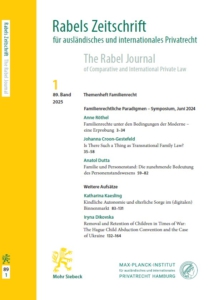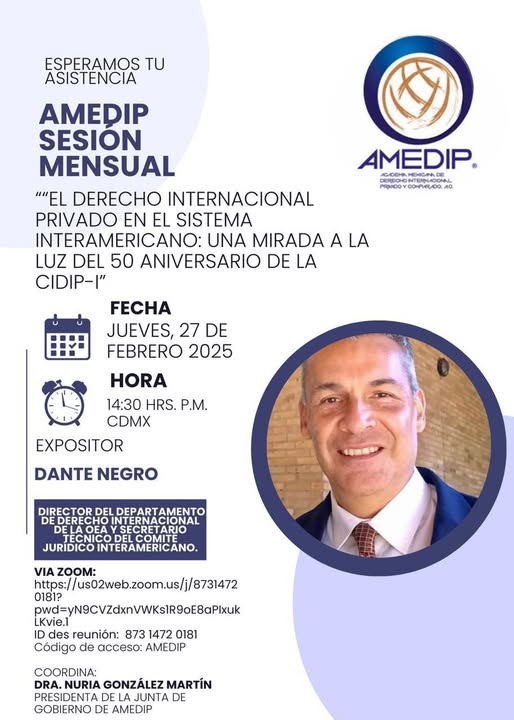Views
Measure twice, cut once: Dutch case Presta v VLEP on choice of law in employment contracts
Presta v VLEP (23 june 2023) illustrates the application of the CEJU’s Gruber Logistics (Case C-152/20, 15 July 2021) by the Dutch Supreme Court. In order to determine the law applicable to an individual employment contract under article 8 Rome I, one must compare the level of protection that would have existed in the absence of a choice of law (in this case, Dutch law) with the level of protection offered by the law chosen by the parties in the contract (in this case, the laws of Luxembourg), thereafter, the law of the country offering the highest level of employee protection should be applied.
U.S. Supreme Court Renders Personal Jurisdiction Decision
This post is by Maggie Gardner, a professor of law at Cornell Law School. It is cross-posted at Transnational Litigation Blog.
The U.S. Supreme Court yesterday upheld the constitutionality of Pennsylvania’s corporate registration statute, even though it requires out-of-state corporations registering to do business within the state to consent to all-purpose (general) personal jurisdiction. The result in Mallory v. Norfolk Southern Railway Co. re-opens the door to suing foreign companies in U.S. courts over disputes that arise in other countries. It may also have significant repercussions for personal jurisdiction doctrine more broadly. Read more
The New Saudi Civil Transaction Act and its Potential Impact on Private International Law in Saudi Arabia
The Kingdom of Saudi Arabia (KSA) has recently enacted a new Civil Transactions Law (Royal Decree No. M/199, dated June 16, 2023). The law will enter into force on December 16, 2023, 180 days after its enactment (hereinafter referred to as “the new law”). This law has been rightly described as “groundbreaking” because, prior to the enactment of the new law, there has been no codification of civil law in the Kingdom, and civil law issues have traditionally been governed by the classical rules of Islamic Sharia according to the teachings of the prevailing school of fiqh (religio-legal jurisprudence) in the Kingdom (Hanbali School). Like most of the civil law codifications in the region, the new law focuses mainly on the so-called “patrimonial law,” i.e., property rights and obligations (contractual and non-contractual). Family relations and successions are dealt with in a separate law, which was previously enacted in 2022 and entered into force the same year (Personal Status Act, Royal Decree No. M/73 of 9 March 2022, entered into force on June 18, 2022).
News
New issue alert: RabelsZ 89(2005)
 Issue 1/2025 of RabelsZ has just just been released. It contains the contributions to a family law symposium held at the Max Planck Institute in Hamburg in June 2024. All content is Open Access: CC BY 4.0 and more articles are available Online First.
Issue 1/2025 of RabelsZ has just just been released. It contains the contributions to a family law symposium held at the Max Planck Institute in Hamburg in June 2024. All content is Open Access: CC BY 4.0 and more articles are available Online First.
Anne Röthel, Preface to this family law special, pp. 1–2, https://doi.org/10.1628/rabelsz-2025-0003
AMEDIP’s upcoming webinar: Private International Law in the Inter-American system: A glance in the light of the 50 anniversary of the CIDIP (27 February 2025 – in Spanish)

The Mexican Academy of Private International and Comparative Law (AMEDIP) is holding a webinar on Thursday 27 February 2025 at 14:30 (Mexico City time – CST), 21:30 (CET time). The topic of the webinar is ‘Private International Law in the Inter-American system: A glance in the light of the 50 anniversary of the CIDIP’ and will be presented by OAS Director Dante Negro (in Spanish).
CIDIP is the Spanish acronym for the Inter-American Specialized Conferences on Private International Law. For a history of the CIDIP, click here. Read more
Book Launch: Philosophical Foundations of Private International Law – Oxford, March 19, 4pm-6pm
In 2024, Oxford University Press published Philosophical Foundations of Private International Law, edited by Roxana Banu, Michael S Green, and Ralf Michaels. The book represents the first inter-disciplinary engagement with questions of private international law from a philosophical perspective, covers a wide range of philosophical questions in private international law and brings philosophers in conversation with private international law scholars to demystify the analytical tools of each discipline in relationship to the other. More information on the book, including a table of contents, is here.
Now, Oxford University is organizing a hybrid book launch on March 19, 4pm-6pm. An introduction from the Editors will be followed by a discussion on key themes by Gabriel Encinas, Verónica Ruiz Abu-Nigm, Robert Stevens, Antonios Tzanakopoulos, and Emmanuel Voyiakis. More information on the event and on how to sign up for physical or virtual participation is here.


